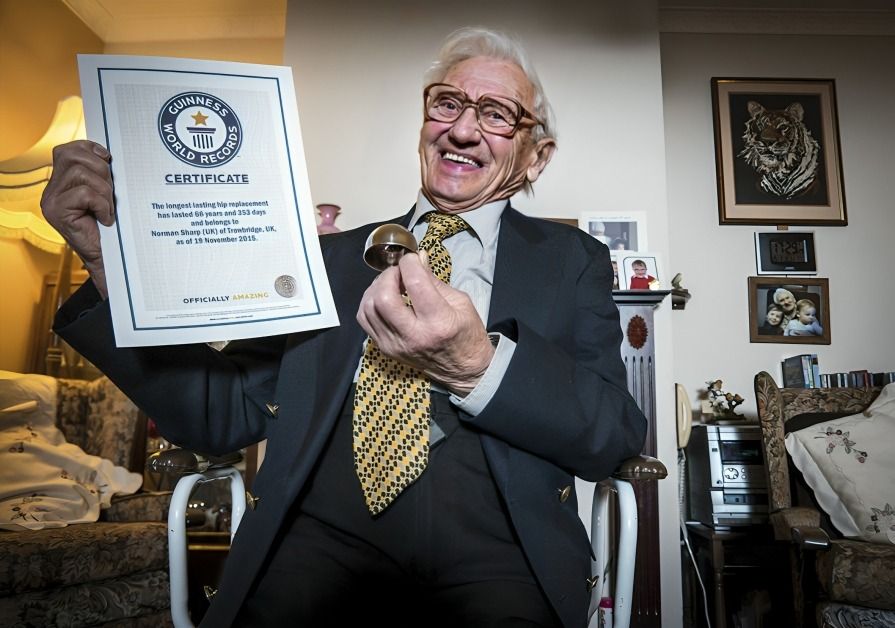
“
Hips are incredible body parts, essential for a wide range of movements. They enable us to walk, run, dance, and jump, making them crucial for everyday activities and fun adventures. The hip joint is one of the most flexible and resilient joints, allowing us to move in many directions. In this blog, we’ll dive into 15 amazing facts about hips that will highlight their fascinating structure and importance. We’ll uncover how the hip joint works, its role in our posture and balance, and some surprising aspects that make it special. Whether you're an active kid who loves sports or just curious about how your body moves, these facts will show you why hips are truly remarkable. Get ready to discover the amazing world of your hips and appreciate how they help you stay active and agile!1
1
”
Did you know that your hips are the second most flexible joint in your body, surpassed only by the shoulders? This impressive range of motion allows for various movements, from walking and running to dancing and sports.1
The hip joints are classified as ball-and-socket joints, the most mobile type of joint in the human body. This design allows for various movements, including walking, squatting, and jumping. 2
Important nerves pass through the hip area, connecting the legs to the spinal cord. These nerves control the lower body's movement, sensation, and muscle function. Damage to these nerves can result in pain, weakness, numbness, or difficulty walking. 3
In 1891, Professor Themistocles Glück attempted early hip replacement surgery using ivory implants to address hip joint damage caused by tuberculosis. His pioneering efforts laid the groundwork for modern procedures. 4
3D printing technology revolutionizes hip replacement surgery, allowing customized and more precise implants, improving outcomes and reducing recovery times. By creating implants, surgeons can achieve better fit, stability, and longevity. 5
Hip Dysplasia condition occurs when the hip joint doesn't form correctly. The ball-and-socket joint doesn't fit together properly, leading to pain, stiffness, and arthritis. Early diagnosis and treatment are crucial to prevent complications. 6
Cycling is a fantastic way to boost hip health. This low-impact activity improves hip mobility, strengthens core muscles essential for hip stability, and can help manage hip pain. Regular cycling enhances flexibility and range of motion, contributing to overall hip well-being. 7
Kangaroos are known for their powerful hopping abilities; kangaroos have exceptionally strong and flexible hip muscles. Their unique hip structure allows them to propel themselves with incredible force. 8
The femur, the longest and strongest bone in your body, acts as a pillar, supporting your weight and connecting your hip to your knee. This powerhouse can resist forces between 1,800 and 2,500 pounds, making it a crucial component of our skeletal framework and mobility.9

The longest hip replacement on record has lasted over 70 years! Norman Sharp from the UK, who received his first hip replacement in 1948, still has his original implants functioning today, demonstrating the incredible durability of modern medical implants.
Hormonal changes during pregnancy can relax ligaments in the hips, leading to discomfort. This condition, often referred to as pelvic girdle pain or symphysis pubis dysfunction, can cause pain and instability in the hip area. 10
The record for the most horizontal bar back hip rotations in one minute is held by Roman Sahradyan from Armenia, who accomplished 41 rotations in 60 seconds. This impressive display of agility and control highlights the dynamic capabilities of the hip joint. 11
A large opening, known as the pelvic inlet, exists between the hip bones. This cavity, part of the pelvis, forms a passageway for the passage of various structures, including the spinal column, reproductive organs, and the lower gastrointestinal tract. 12
It's estimated that millions of people worldwide are affected by hip arthritis. The condition is more prevalent in older populations, with the incidence increasing. Obesity, physical activity levels, and genetics can influence the risk of developing hip arthritis. 13
John Randall from the UK became the oldest person to receive a total hip replacement at 102. This surgery, performed by a skilled medical team, highlights the advancements in orthopedic surgery and the potential for improved quality of life at any age. 14


